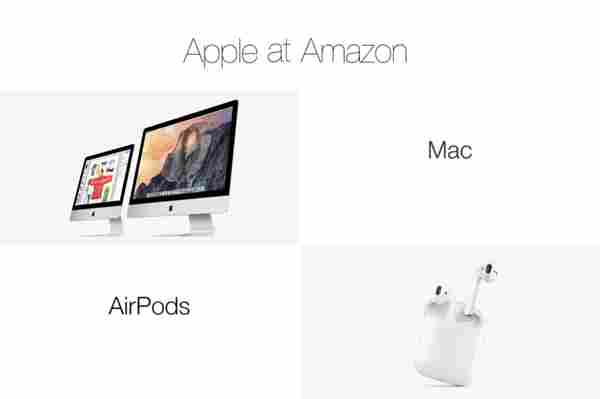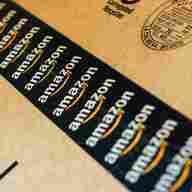It’s no secret that Amazon has a major counterfeit problem.

From hot beauty products that don’t live up to expectations to knock-off electronics, shoes, and more — it’s become a real challenge to know whether you’re getting the real deal or some shoddy imitation.
By sheer volume, Amazon’s marketplace is hard to regulate. The bookseller-turned-platform company is a sprawling digital pool filled with more third-party sellers than they can realistically monitor for quality.
Still, the e-commerce giant has made some inroads toward remedying the problem.
Amazon announced recently would stop selling unauthorized Apple products, two years after a 2016 audit found that 90% of MacBooks, iPhones, and iPads were fake.
Amazon faces its counterfeit problem
Counterfeits disproportionately affect small sellers
Amazon has made it relatively easy for smaller brands to expand their reach to a broader audience, but it’s also made it easy for counterfeit sellers to infringe on those smaller businesses.
Back in July, the Wall Street Journal reported that counterfeiters have been creating fake versions of smaller manufacturers’ products and undercutting sellers’ profits.
In short, the digital seller has become an online hub for the kind of goods you’ll find on New York’s Canal Street or Los Angeles’ Santee Alley.
According to the Los Angeles Times , it’s become increasingly difficult for Amazon shoppers to identify counterfeits based on photos.
Seller John Fawcett found that months after receiving rave reviews from customers for his durable phone chargers, reviews began dipping into the one-star territory.
Initially, he was confused by the dramatic turn, but Fawcett told the Times that he found a clue in an image of his brand logo that just didn’t look right. He then placed a few orders and confirmed his suspicions: consumers were getting low-end counterfeits instead of the real product.
More about Apple
How to save battery on your iPhone ►
How to best organize Macbook apps ►
How to customize the Control Strip on your MacBook Pro ►
How to use Apple’s new Screen Time controls ►
The Global Brand Counterfeiting Report 2018-2020 from ResearchAndMarkets.com found losses from e-commerce scams totaled $323 billion last year alone.
And, another report from Gartner found that one in three third-party products sold on Amazon has at least one customer review stating that they received a fake product.
So, while it seems like Amazon is in over its head, there is a hint of evidence the company is taking steps toward improving their efforts, or risk brands ditching the platform in higher numbers.
Swatch and Birkenstock are out . Likewise, many smaller brands don’t want to risk their reputation or their bottom line by selling their wares with the platform.
Is the Apple move a step in the right direction?

Earlier this month, Apple and Amazon announced that they struck a deal marking the return of the Apple TV to the platform, as well as the launch of an Apple Authorized Reseller page . The new page gives shoppers access to iPhones and such with Prime shipping — and it protects against the rampant problem with fake electronics.
The Apple announcement is undeniably a big deal, but it’s unclear if similar deals are in the works. The brand registry tool has been around for a while now, and the problem persists.
Amazon’s Brand Registry 2.0 , which rolled out last year, gives brands access to tools that allow them to manage their presence on the platform. Sellers can accurately represent their products, report violations, and share information about suspicious actors on the platform.
Brand Registry can help you prevent counterfeiters. However, it does not prevent nonauthorized resellers from selling your products on the platform below the minimum advertised price.
Additionally, brands need to police their channels on a regular basis, meaning smaller sellers may not have the resources to fight against bad actors.

6 ways to keep up with great deals on Amazon
Do counterfeits affect the brand?
Amazon stresses that they strictly prohibit the sales of counterfeit products and have invested tremendous resources in combatting sales of illicit goods.
But counterfeits might offer some benefits for Amazon. Stacy Mitchell of the nonprofit Institute for Local Self-Reliance says fakes “enhance its market power over suppliers.” While sellers suffer, Amazon still takes a cut from all sales that pass through the platform.
On the downside, consumers may well lose trust in Amazon if they can’t count on receiving an authentic product from the e-tailer. Where things like household goods, books, or media will likely remain big sellers, other products like makeup brands, skincare, fashion, and consumer electronics may fall.
Brands won’t want to sell on the platform and consumers won’t want to risk receiving an item that doesn’t match their expectations.
While Amazon is currently working on new AI technology aimed at reducing the number of counterfeits in their warehouse, we wonder if it will be enough to protect consumers and sellers alike.
Brands like Apple can throw their weight around and come out with a deal. But small sellers face a tough decision. They can pull their wares and see a drop in traffic or stick with the platform and risk bad reviews.
More about Macs
How to take a screenshot on a Mac ►
How to connect to a printer on Mac ►
Is the Apple Pencil worth buying? ►
Apple fans are putting their new Macs in their freezers to beat heating problem ►